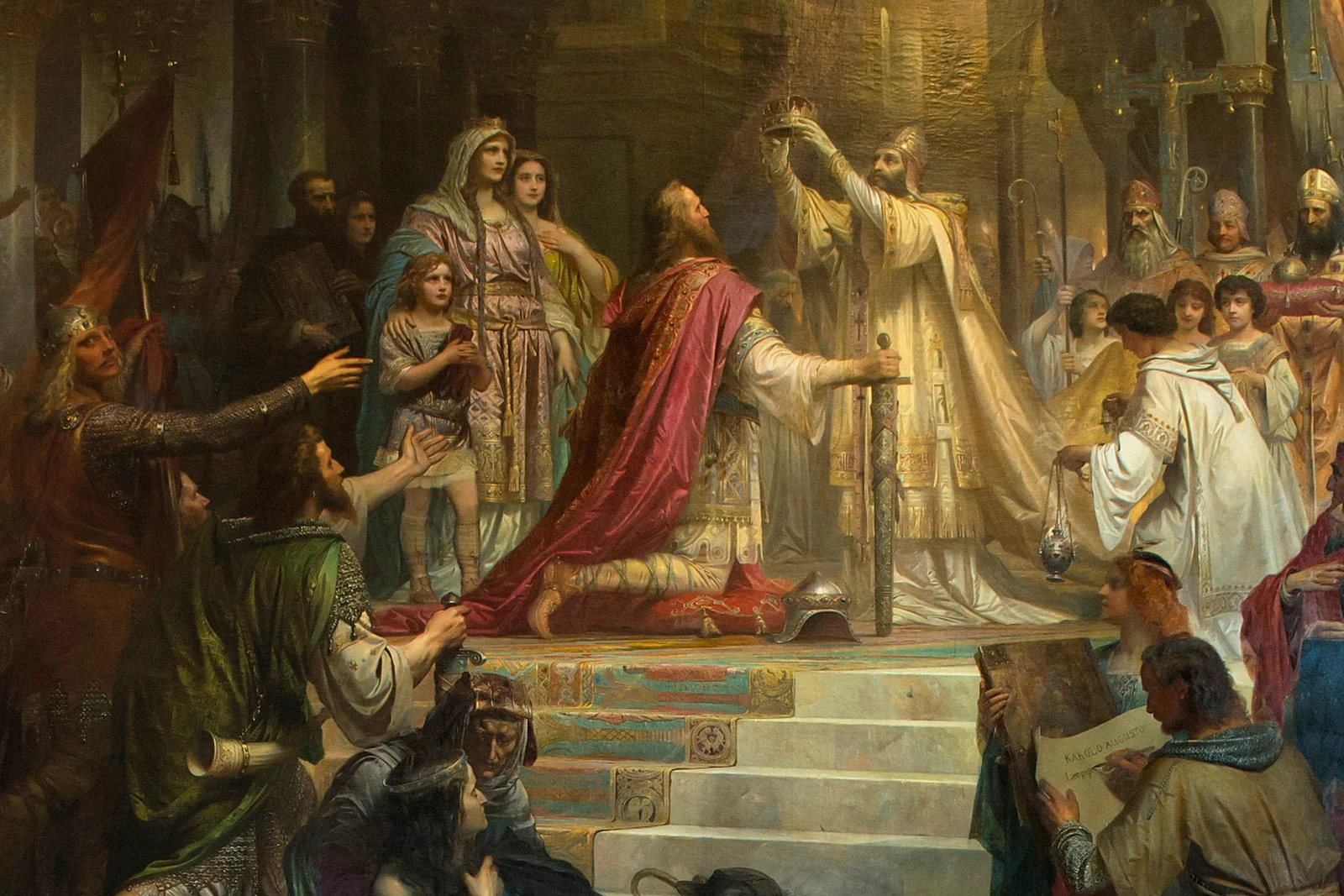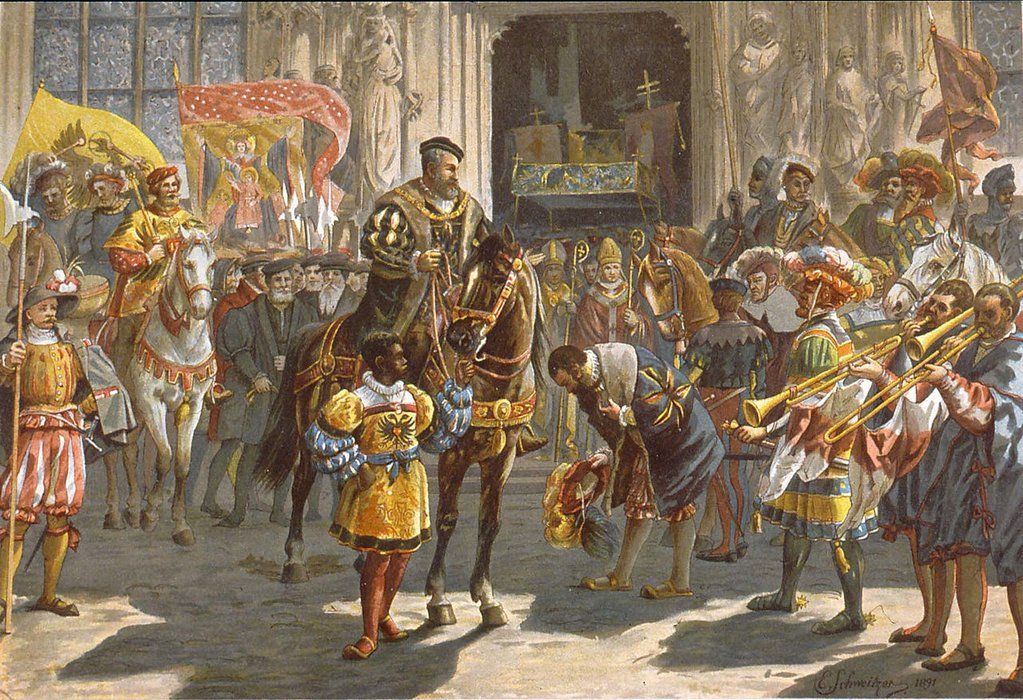Holy Roman Empire
Overview
In 951, Otto came to the aid of Adelaide, the widowed queen of Italy, defeating her enemies, marrying her, and taking control over Italy. In 955, Otto won a decisive victory over the Magyars in the Battle of Lechfeld. In 962, Otto was crowned emperor by Pope John XII, thus intertwining the affairs of the German kingdom with those of Italy and the Papacy. Otto's coronation as Emperor marked the German kings as successors to the Empire of Charlemagne, which through the concept of translatio imperii, also made them consider themselves as successors to Ancient Rome.
In 963, Otto deposed the current Pope John XII and chose Pope Leo VIII as the new pope (although John XII and Leo VIII both claimed the papacy until 964 when John XII died). This also renewed the conflict with the Eastern Emperor in Constantinople, especially after Otto's son Otto II (r. 967–83) adopted the designation imperator Romanorum. Still, Otto II formed marital ties with the east when he married the Byzantine princess Theophanu.
Otto died young in 1002, and was succeeded by his cousin Henry II, who focused on Germany. Otto III's (and his mentor Pope Sylvester's) diplomatic activities coincided with and facilitated the Christianization and the spread of Latin culture in different parts of Europe.[97][98] They coopted a new group of nations (Slavic) into the framework of Europe, with their empire functioning, as some remark, as a "Byzantine-like presidency over a family of nations, centred on pope and emperor in Rome", has proved a lasting achievement.[ Otto's early death though made his reign "the tale of largely unrealized potential".
Henry II died in 1024 and Conrad II, first of the Salian dynasty, was elected king only after some debate among dukes and nobles. This group eventually developed into the college of Electors.
Interactive Map
Welcome to our World of Darkness tabletop world.
To gain full use of the site you will need to LOGIN to world anvil and come back to this page.
once you are logged in you will be able to select a species in the right nav



Comments